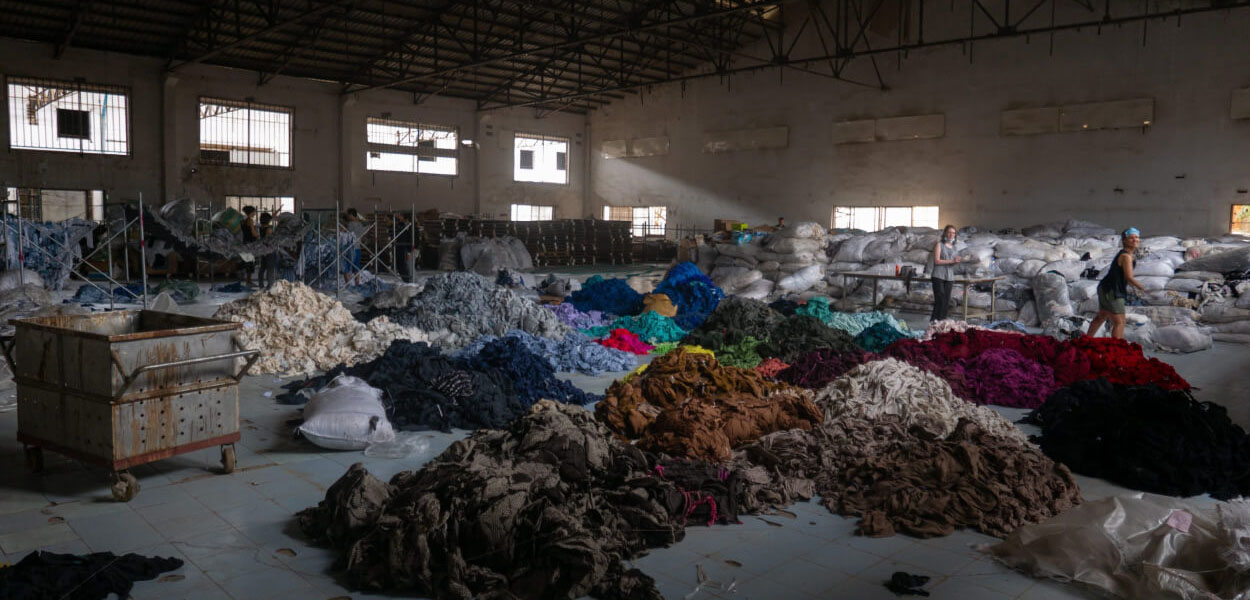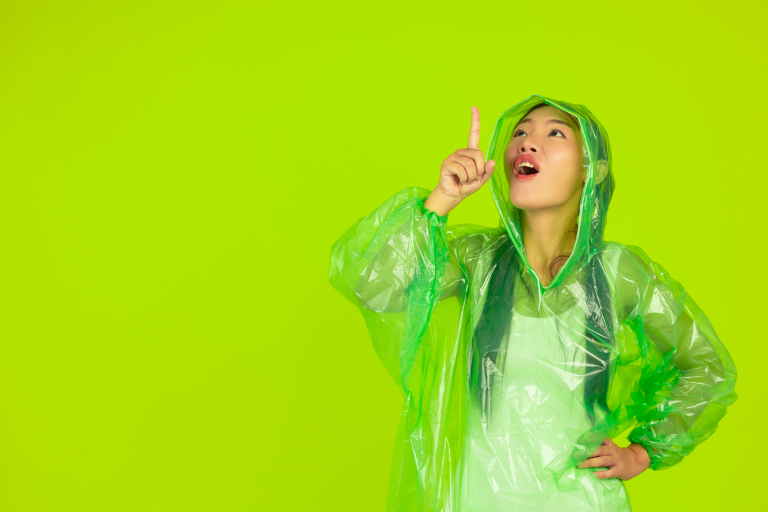Clothing, shoes, and accessories are thrown away every day in the garbage. Imagine if we put together New York’s textile waste – would it go as tall as the Empire State Building? This is what a study, done by the Sanitation Foundation evidenced.
According to the released research, if we put New York’s 2020 textile waste together, it would accumulate to the size of one of Big Apple’s most prestigious buildings. For your measure, the Empire State Building has 102 floors, which means 443 meters.
The report, released by WWD, affirmed that 200,000 tons of fashion waste were generated by New Yorkers last year. Even though, as said by Julie Raskin, Director of the Sanitation Foundation, the environmental awareness of New York clothing brands, as well as that of consumers, increased last year. She pointed out that although recycling metal, glass, and paper have been mandatory in NYC since 1989, the recycling of textile waste is not as of yet.
What Is Textile Waste
We create different types of waste in our daily lives. But, when it comes to textile waste, it is directly related to clothing waste.
Wastage or waste can be defined as some materials that are not usefull anymore after the end of the process or the basic use of a product. To sum up, It is those worthless, useless or defective material that you get after producing something or using it.
Therefore, textile waste is the material that becomes unusable or worthless after the end of the production process. Upholstery industries, for example, are contributors to the increase in textile waste. However, the most aggressive of all is, by far, the fashion industry.
Reducing Textile Waste
As we keep working to raise awareness among society when it comes to sustainability, it is important that each one of us, and also each of the companies, do our part. Little by little, we can change the world and build a path where profitability and sustainability walk side by side in the fashion industry.
According to Jordana Guimarães, Co-Founder of Fashinnovation, although the industry is making leaps as far as bringing “sustainability” into conversations & media, the end consumer is still in most ways left in the dark. “We as an industry have to stop with the “exclusivity” and allow full “inclusivity” so that we are not just debating with each other on changes that need to be made, but that everyone is a part of the conversation… this is how real change will come to play”.
Companies and their essential responsibility on scaling down textile waste
We’ve all come to the agreement that textile waste, but also trash in general, is a problem and that we have to reduce it as fast and as much as possible. It is directly related to how many people are in NYC – and on the planet -, all the stuff we have, compound by our preferences and consumption plus, of course, the production processes of the companies that we buy from.
Some brands are leaders in filling up landfills. Without the slightest awareness, these companies produce bad quality products made for one use only, which are based on a lack of intelligent use of cutouts and fabrics when making clothes, and the capitalist culture focused entirely and exclusively on the selling amount.
With technology and innovation, but also by reducing exacerbated production and working in a more sustainable way, the fashion industry will change this reality. That’s why we need to keep bringing up revolutionary and disruptive discussions, just like we do here, at Fashinnovation.
As consumers, with baby steps, we will make a change
As we said, It is necessary to take action in order to build new practices and change the destination of the clothes in your wardrobe. With that in mind, in the next topic, we’ll give you 7 tips on how to generate less waste and have a more sustainable and ecologically aware lifestyle.
1. Prolong the life of your clothes and buy less
A good start to prevent textile waste is simple: buying less. If you buy less, you’ll throw away less. It is important that every time you’re in front of a new piece of clothing, you ask yourself: do I really need this?
The key to making this happen is by prolonging the life of the clothes that you already have. It means choosing pieces of good quality, washing them only when necessary, and taking good care of them.
2. Repair
Instead of throwing away a piece of clothing that has some kind of damage, try to fix it! With that, you’ll make your clothes last longer, save money and produce less waste.
3. Upcycle
Tired of the same piece or it doesn’t fit you anymore, we suggest you reinvent it! There are a bunch of DIY tutorials online, which can give you an idea of what to do with that shirt or sneaker, for example, that hasn’t been used for a while. Saying that it’s not your style anymore, is not an excuse to leave an item of clothing forgotten in your closet.
Today, with the pandemic, a good way out is using old clothes to make face masks, that will not only protect you – if made according to World Health Organization recommendations – but also look good!
4. Recycle
Ok, it’s not repairable and you have no idea of how to renew it? A more sustainable – or at least, less harmful – is to give it another use.
You can use a cotton shirt for cleaning and polishing the house, or even cut it in rounds and use it as reusable cotton rounds to remove make-up, for example. There are a lot of things that you can turn your old clothes into.
5. Donate
There is always someone that will be very happy with an item of clothing that, even though you don’t want anymore, is in good condition. You can donate them to local charities that will hand them out to people in need.
Another option is to donate your clothes to a thrift shop. Maybe there’s no one in your circle that will like it, but someone else will give it a second life.
6. Buy at thrift shops and swap clothes
The circular economy is a good solution for your unused clothes, as it helps not only your pocket and the environment, but also stimulates circular consumption, making the process profitable, and at the same time, sustainable.
Furthermore, there’s always the possibility of swapping clothes. It is an intelligent alternative because you will exchange an item that you’re not using, giving it to someone that will enjoy it, and, at the same time, go home with something new in your wardrobe. “One man’s trash is someone else’s treasure”. Check out Global Fashion Exchange as they do incredible work in this area!
7. Shop sustainably
We are not telling you to not shop. What we are saying is: think twice before buying anything. Shopping sustainably and, in consequence, being a better fashion consumer will help to change the current situation. Once because we will then get out of the stores only the clothing that’s really needed, helping you to also save money. And, secondly, because by buying less, we’re putting a smaller amount of clothes in circulation from now on.
The Sanitation Foundation
The Sanitation Foundation is the official non-profit partner of the New York City Department of Sanitation (DSNY). They are focused on celebrating and supporting the essential Sanitation workforce and advance the department’s ambitious zero-waste agenda.
They focus their work on fostering innovative public/private partnerships between DSNY, businesses, and community organizations. By getting together public engagement, education, and capacity-building programs, they support DSNY in achieving a healthier, cleaner, more sustainable NYC.
ReFashion Week NYC
ReFashion Week NYC, presented by the Sanitation Foundation, in collaboration with DonateNYC, had its third edition in February this year. The event celebrates secondhand and sustainable fashion in New York City.
Right after NYFW, ReFashion Week offers a week of shopping, swapping, and learning. Along with their partners, the event sparks conversations about how residents, nonprofits, and businesses can find creative solutions to reduce textile waste.
Also, along with the other agenda activities, there’s the ReFashion Runway Show, where thrift stylists compete in front of a live digital audience.
Want to know more? Check out some tips on how to consume in a sustainable way and also on how consumerism is harmful to the planet – and to us.






